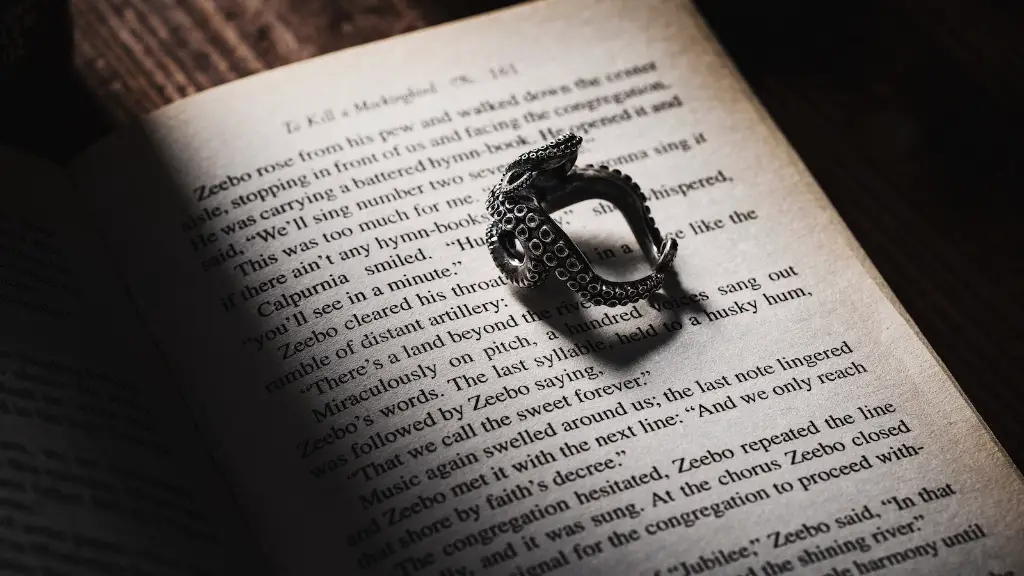Stressed syllables in poetry are an important concept for all poets. Knowing when and where to place the stressed syllables can help you to create the desired sound and the perfect flow for a poem. Stressed syllables can be found in various forms of poetry and they can be used to create rhymes and internal rhymes. It is also important to understand when and where to put the right emphasis on words to create the right emotion and tone in your poem.
Stressed syllables are the syllables that are longer, louder and higher pitch than the other syllables in the word. Usually the stressed syllable is in the middle of the word. Different languages use different stressed syllables. In English, the stressed syllable is usually the syllable that contains the main vowel sound. For example, the word ‘amaze’ has two syllables, a-maze. The vowel sound in the syllable a-maze is ‘a’, and so it is the stressed syllable.
In terms of poetry, stressed syllables are important for creating the desired sound and flow of the poem. Even if the lines are nearly identical in terms of words and length, the correct stress of syllables can adds a dramatic and musical effect. Poets use this effect to create contrast and emphasis in the poem.
It is also important to note that different types of poetry have different stress patterns in terms of syllables. For example, in British English, there is a pattern called the IAMBIC PENTAMETER that emphasizes on alternating stressed and unstressed syllables. In this pattern, there are five sets of two syllables with the first syllable of each pair being unstressed, and the second syllable being stressed. This pattern is commonly used in sonnets and Shakespearean plays as a way to create a musical flow to the text.
Study of stressed syllables in poetry can be further enhanced by looking into the different poets and their poems. Each poet has their own style and understanding of stressed syllables. This provides us with inspiration on the different ways or formulas of creating a poem with a great sound and flow.
Stressed syllables can also create internal rhymes. Internal rhymes occur when one or two words that rhyme are placed within the same line of a poem. This helps to create more emphasis on the words and greater tension in the poem. Stressing on the right syllable can create a better internal rhyming effect and further increase the emotional and dramatic influence.
Types of Stressed Syllables
In terms of poetry, there are four types of stressed syllables. These types are the primary, secondary, tertiary, and quaternary stresses. The primary stress is usually the first syllable of a word and is the most emphasized. The secondary stress is the second most stressed syllable and is usually the last syllable of a word. The tertiary stress is the third most stressed syllable and is the third syllable of a word. The quaternary stress is the fourth most stressed syllable and is used for words that have more than four syllables.
How to Read Poetry Properly
Reading poetry properly is an important part of understanding the concept of stressed syllables. Properly reading poetry will allow the reader to understand the emotions and messages that the poet is trying to convey. This also helps to recognize the various techniques that the poet has used to communicate the message in the poem. These techniques can include stressed syllables, rhymes, internal rhymes and many more.
In order to properly read a poem, it is important to recognize the stressed syllables and to pronounce them properly. This will allow the reader to recognize the various techniques that the poet has used to create the desired effect in their poem.
It is also important to note that some poets use specific rhythmic patterns that emphasize certain syllables, and this can be used to recognize how the poem should flow. To fully appreciate a poem and its intended meaning, the rhythm, tones, and emotions that the poet has tried to create should also be understood.
Conclusion
Stressed syllables in poetry are essential for a poet in creating their desired sound and flow in their poem. They are also important for creating internal rhymes which add to the emotions and meaning of the poem. Poets should take the time to understand how to properly read a poem and recognize the various techniques used in order to appreciate the intended meaning.


